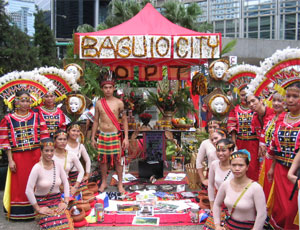The Stamp Language
Are stamps where part or all of the receipt are given over to some charitable cause, public welfare, or other relief fund. On most of these stamps are mentioned the amount for postage in addition to a surtax for the find.
Are stamps where part or all of the receipt are given over to some charitable cause, public welfare, or other relief fund. On most of these stamps are mentioned the amount for postage in addition to a surtax for the find.
"1 Seek Your Face, 0 Lord." These words of the Psalmist (Ps. 27:8) reflect the unfathomable desire of a simple priest to seek the face of Jesus. He found it in the face of the poor, not the materially destitute, but those hungry and thirsty for an intimacy with a loving God.
Mountain Verditer-Flycatcher ( Eumyias panayensis )
Common in forest, it is popularly called "Lito-lito" in Pilipino. Forehead, lores and chin, deep black; feather bordering black, face bright verditer blue, rest of upperparts verditer blue; belly and undertail coverts white; wing and tail feathers dark grey edged in brighter verditer blue.
Fr. Fray de Urdaneta was a Spanish Augustinian friar, sail captain and explorer who was in the Legaspi Expedition that left Spain for the Philippines on Novembe 21, 1564 on board the ship Capitana that sailed along with the galleons San Pablo and San Pedro and the tenders of San Juan and San Lucas.
The 14 birds featured are:
| In 1900, when the Americans first came to baguio, it was the only "rancheria," whose dominant feature was a large, low-lying area Kafagway. There were only a few houses and no roads. During the dry season it was a pasture for cattle and horses, but much of the year, it was marshland with a shallow lake where residents hunted for ducks and snipes. Kafagway roughly covered the same area as the present city of Baguio. |
 |

Bridge building in the country is integral to the development of communities. It helps in the opening up of communities to various forms of land transport allowing thus the development of trade and relations between once distant and detached areas. The early history of bridge building was attributed to both the Spanish missionaries and conquistadors. During the early period of American rule, the Bureau of Public Works was created to initiate further the task of linking the Philippines together with spans that for some still serve the commuting public. The bridges highlight an architectural and engineering form that has served nobly the interest of the country.
The Go Families' ancestors, starting from Tai Bei Kong of Shanxi Province, China, took the first step to migrate sometime from 618 AD in the Tang Dynasty, continuing through 1368 A.D. in the Ming Dynasty and up to 1644 during the Ching Dynasty.
Through the efforts of the National Commission for Culture & the Arts (NCCA), February is declared under Presidential Degree No. 683 as the National Arts Month. The NCCA provides support to various artistic activities in the country through its Grants Programs. It has also provided many talented individual and groups, especially in the performing arts, the opportunity to study in various institutions abroad and/or compete in international festivals or contest,and many of them have returned bringing honor to the country.
|
|
The Ateneo de Davao University is one of nine schools in the Philippines owned and operated by the Society of Jesus. The school tradition at Ateneo de Davao University is the product of over four centuries of educational experience of the Jesuits. This tradition started with the establishment of a College in Messina in 1548 by St. Ignatius of Loyola, founder of the Society of Jesus, and which is now found in many educational institutions through the on world managed by the Society of Jesus. |
| Cookie | Duration | Description |
|---|---|---|
| cookielawinfo-checbox-analytics | 11 months | This cookie is set by GDPR Cookie Consent plugin. The cookie is used to store the user consent for the cookies in the category "Analytics". |
| cookielawinfo-checbox-functional | 11 months | The cookie is set by GDPR cookie consent to record the user consent for the cookies in the category "Functional". |
| cookielawinfo-checbox-others | 11 months | This cookie is set by GDPR Cookie Consent plugin. The cookie is used to store the user consent for the cookies in the category "Other. |
| cookielawinfo-checkbox-necessary | 11 months | This cookie is set by GDPR Cookie Consent plugin. The cookies is used to store the user consent for the cookies in the category "Necessary". |
| cookielawinfo-checkbox-performance | 11 months | This cookie is set by GDPR Cookie Consent plugin. The cookie is used to store the user consent for the cookies in the category "Performance". |
| viewed_cookie_policy | 11 months | The cookie is set by the GDPR Cookie Consent plugin and is used to store whether or not user has consented to the use of cookies. It does not store any personal data. |
Recent Comments